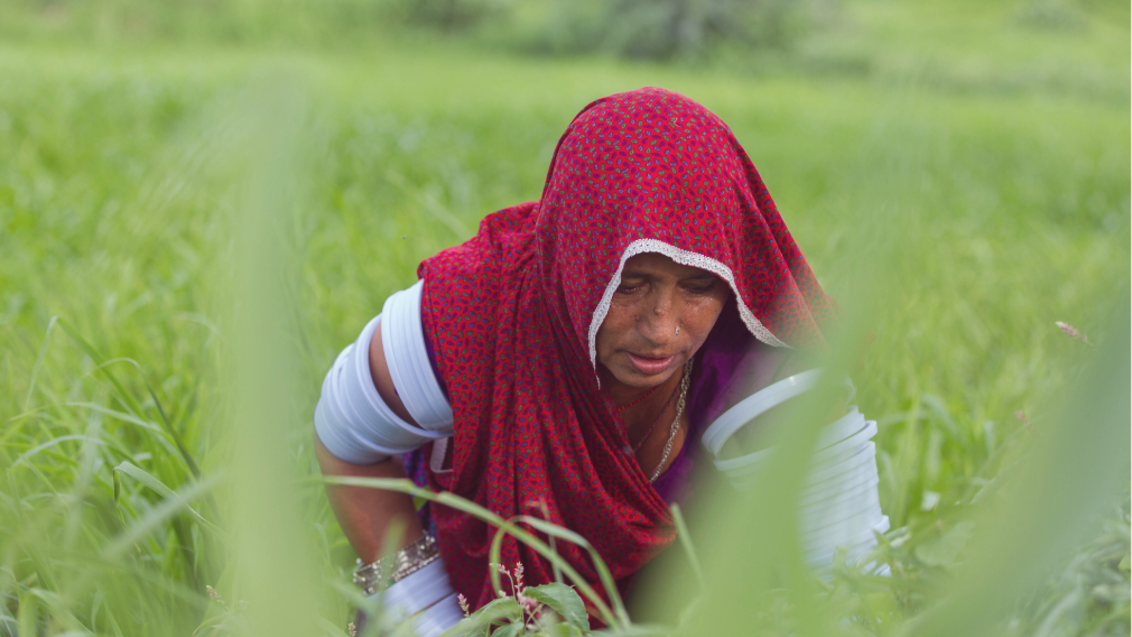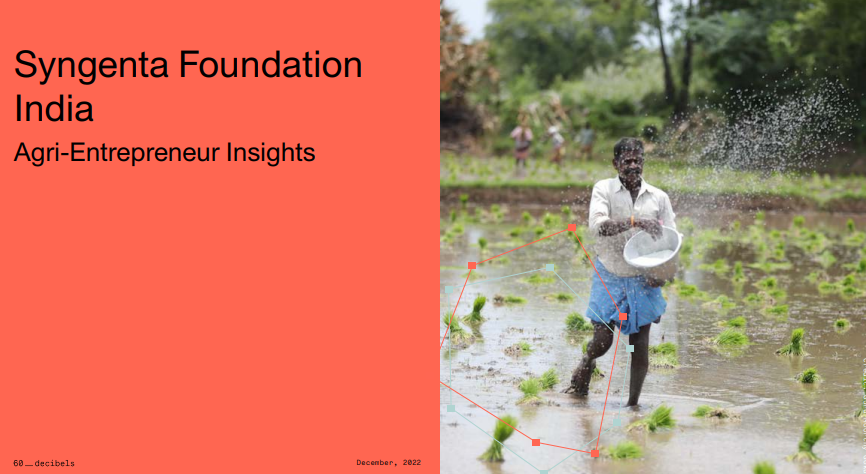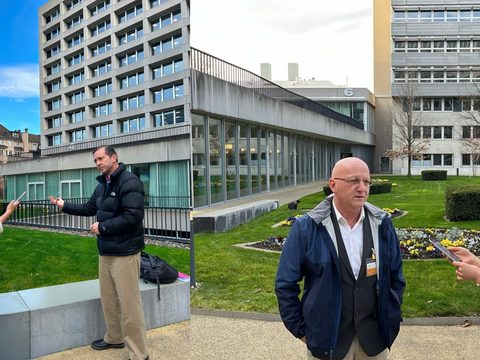Last mile or first? Either way, it’s crucial

By Rajendra Jog, Executive Director Syngenta Foundation India.
For India, farming is a key sector. But millions of smallholders need better access to tools and services. Greater rural entrepreneurship can help, as our own program is showing. But policymakers also have a major role to play.
Agriculture is India’s largest source of livelihoods and a critical pillar of the economy. The sector overall has recently been buoyant, growing by 3.6 per cent in 2020-21 and 3.9 per cent the following year. Indeed, farming’s resilience in the face of adversities made it the only sector to achieve that kind of growth, while many other sectors declined[1]. The major drivers have been the ‘allied sectors’, including livestock, dairy and fisheries. Agriculture now accounts for 18.8% of India’s Gross Value Added (GVA).
Since the early 1960’s, India has shifted from food-deficiency and import-dependency to become a consistent net exporter of food. Today, it is the world’s largest producer of milk, pulses, jute, horticulture, and livestock, and comes second for rice, wheat, cotton, sugarcane, tea, groundnut, fruits, vegetables and goat meat[2].
This agriculture powerhouse still faces numerous challenges
However, the country’s agriculture still faces numerous challenges, many of which are increasing. They include pressure on natural resources, urbanization, fragmented land holdings and widespread malnutrition. Even though yields have grown substantially, they are still low by regional standards. Indian agriculture is also highly vulnerable to climate change. Seasonal water scarcity, rising temperatures, and more frequent drought could jeopardize the country’s food security.
India has some 126 million smallholders. They are among the people worst affected by climate change and least able to cope. Smallholders often struggle to earn decent incomes. The reasons include low crop productivity as well as inefficient land and seed treatment, water management, crop protection, harvesting and threshing. These farmers could benefit from many existing technologies and innovations but lack easy access. Their problem is inadequate ‘first mile access’ – or from suppliers’ point of view, ‘last mile delivery’. This is a challenge across many sectors in rural India. But agriculture suffers from a particularly persistent lack of access to information, credit, good inputs, know-how and market links.
In this context, the Agri-Entrepreneurship program initiated by Syngenta Foundation India can be a game-changer.
Foundation passes an entrepreneurial milestone
Our Foundation started its Agri-Entrepreneur (AE) program in 2014, with major scale-up since 2019. Our aim is to significantly increase farm incomes, and to create sustainable livelihoods for young rural entrepreneurs. Through this program, unemployed youth train to become AEs, subsequently providing products and services to 100-150 nearby smallholders. AEs are hyper-local change agents.
The program currently runs in the states of Andhra Pradesh, Assam, Bihar, Jharkhand, Karnataka, Madhya Pradesh, Maharashtra, Uttar Pradesh, Odisha, Rajasthan, Telangana and West Bengal. In 2023, we passed the major milestone of 10,000 active AEs. About one-third of them are women. The AEs are now supporting about 1.2 million smallholders. Fortunately, this is not India’s only agri-entrepreneurship program – but it is definitely the largest!
We recently conducted an impact assessment with 150 well-established AEs in Maharashtra, Bihar, and Assam. Their ages ranged from 21 to 46. Our survey shows that the program has clearly brought them benefits. 85% of participants report a better quality of life and 82% earn higher incomes. Assam AEs, for example, now earn an average of INR 27,500 (340 USD) per month more than before they joined the program. However, experiences and satisfaction vary between states. Several factors affect AEs’ satisfaction. These include how the program is implemented in a particular area and how quickly local governments issue licenses to sell inputs, for example. The policy and regulatory environment is often not conducive to agri-entrepreneurial success.
Policy should help smallholders and young people to succeed
Smallholders are a crucial part of the Indian economy, but they remain underserved. Rural youth who want to establish an agribusiness still do not get the attention they require to make it a success.
In a recent study with IFPRI, we found that youth entering agribusiness still grapple with challenges. Indian policymakers recognize the importance of youth entrepreneurship and have designed a wide range of policies and programs. However, access to technology, finance, institutional support, markets and business mentorship remains limited. Many rural young people also lack the skills and experience needed to start and run a business.
Training for rural youth also remains limited. Our Foundation devotes major efforts to closing the gap. But the public sector also needs to support training systematically on a large scale. The offers must be geared to specific contexts and actual needs. Training for future businesspeople should develop their entrepreneurial skills as well as technical know-how. Business incubator programs would help young entrepreneurs to connect with the latest research and innovation that can benefit their own activities. Digitalization is another key topic. India needs to increase investment in youth economic inclusion. Careful monitoring and evaluation will show what works and why, and it should thus guide future approaches.
India is now the world’s populous nation. Feeding its people sustainably is a huge task. To meet this challenge successfully, the country needs the best mix of policies, smart incentives and public investment, as well as better price and income policies. To produce more from less, in harsher climatic conditions, more innovative technologies and increasing digitalization are also required. Our Foundation and thousands of AEs are already playing their part – and there’s more to come.
[2] https://rbidocs.rbi.org.in/rdocs/Bulletin/PDFs/02AR_170120226CD582783DB…

- Read about the studies in Bangladesh and Indonesia – and see what it’s like to be a survey interviewer.

